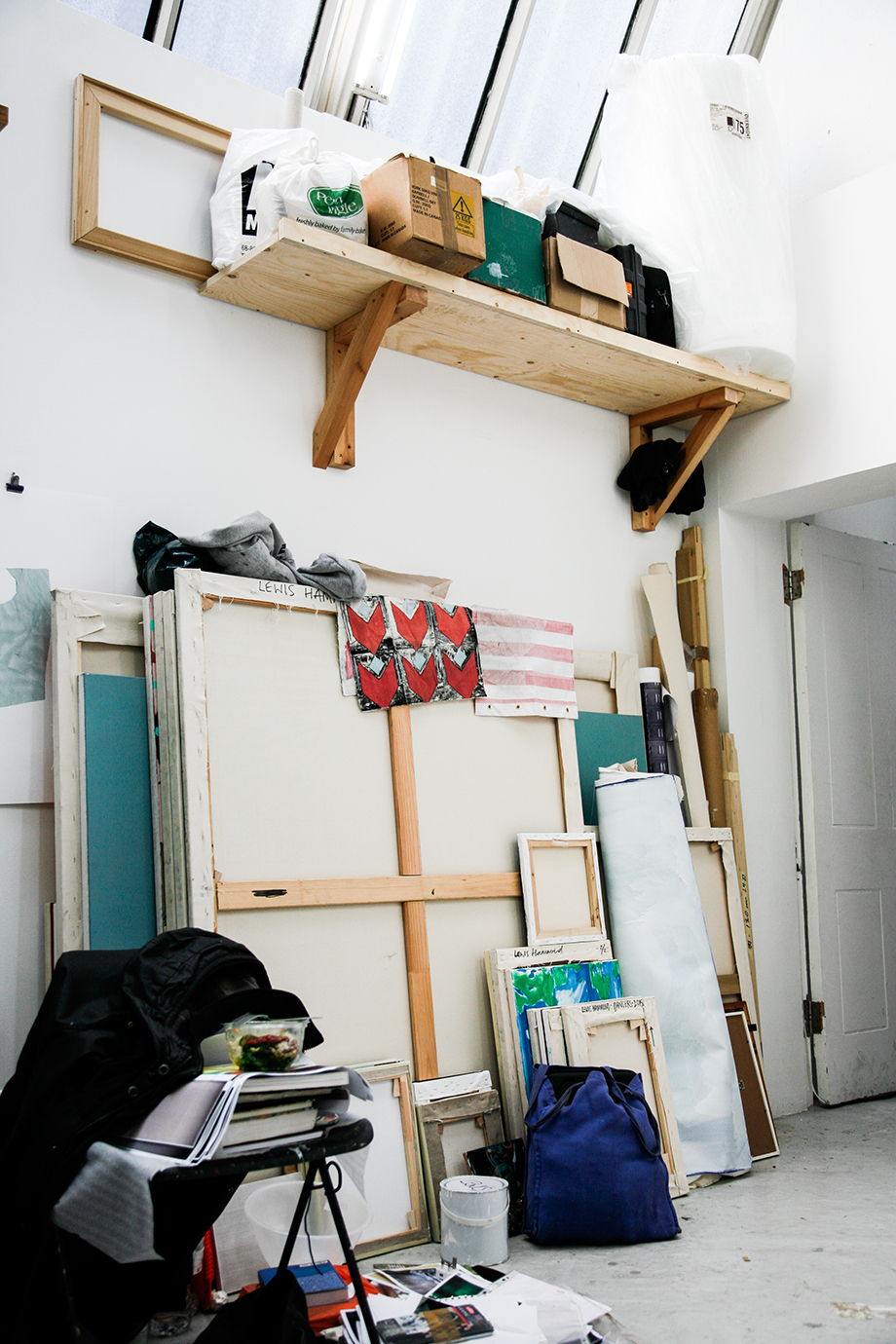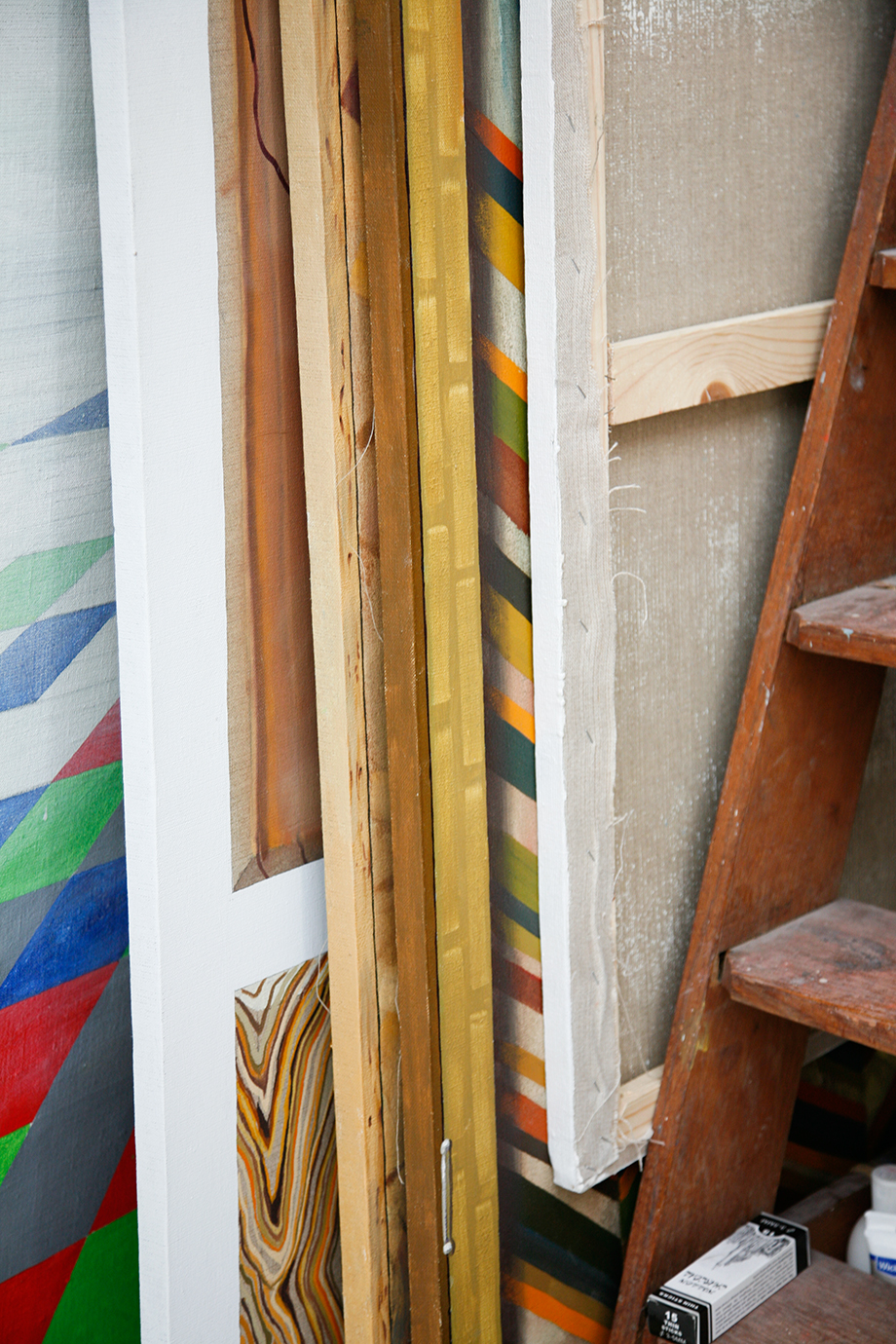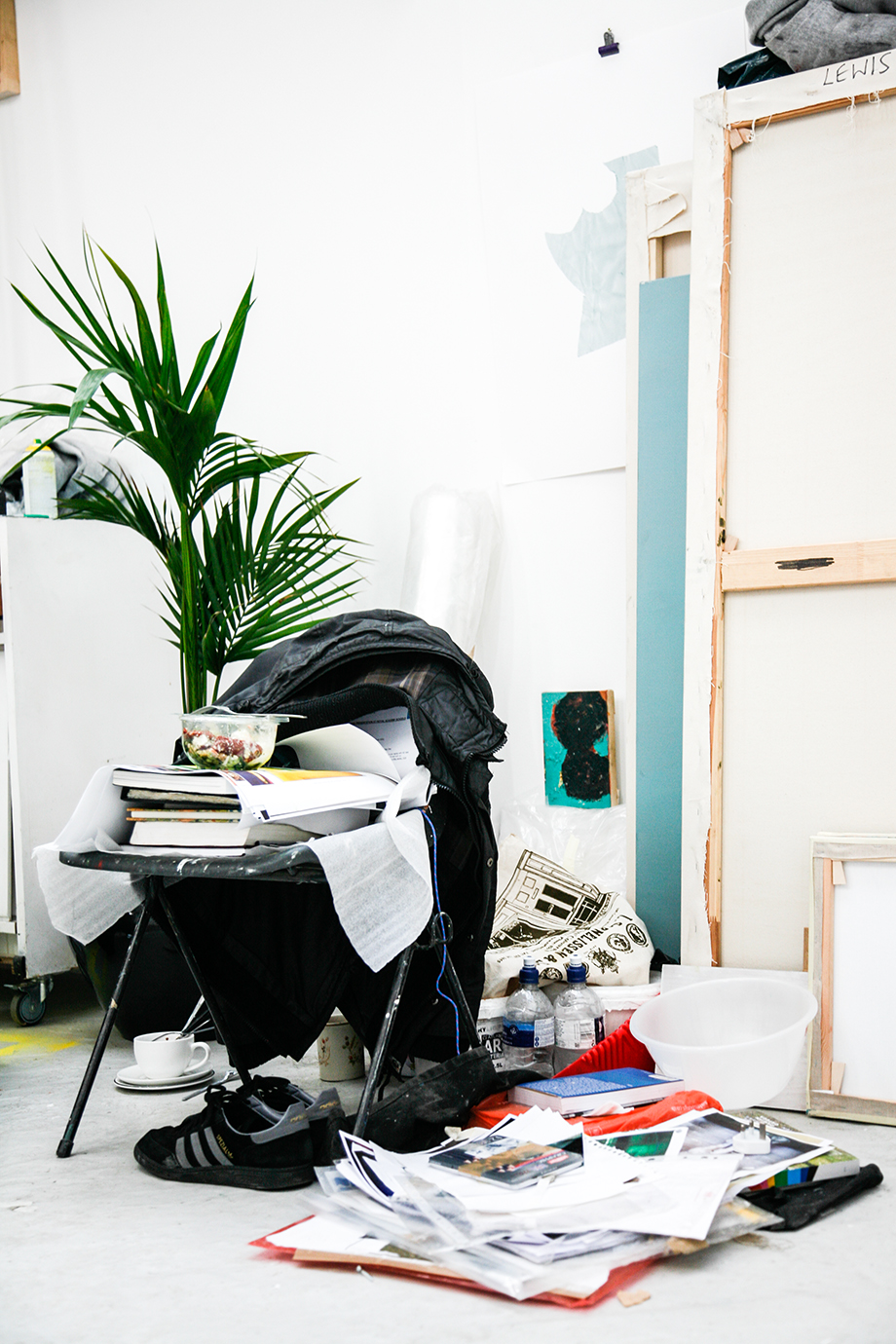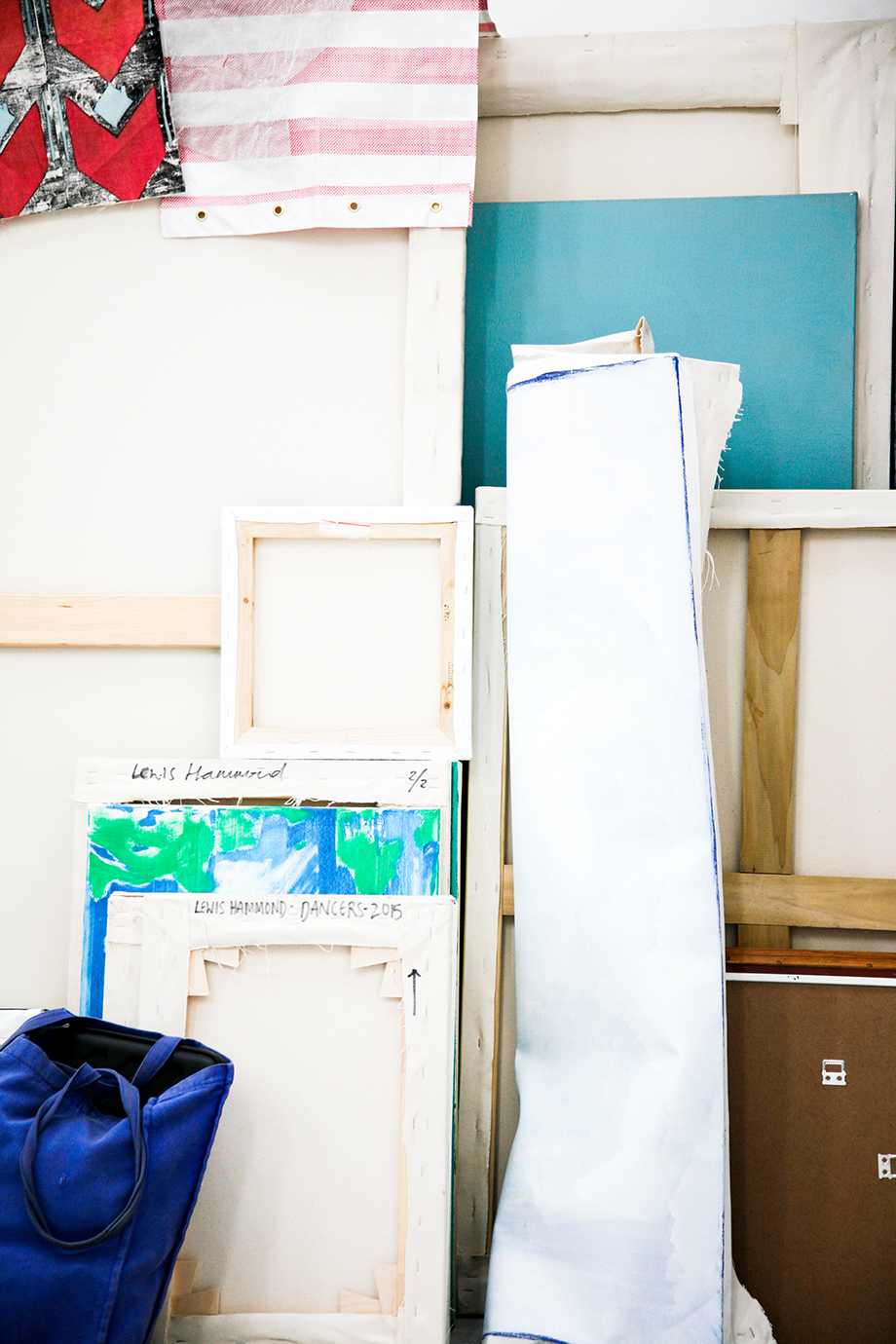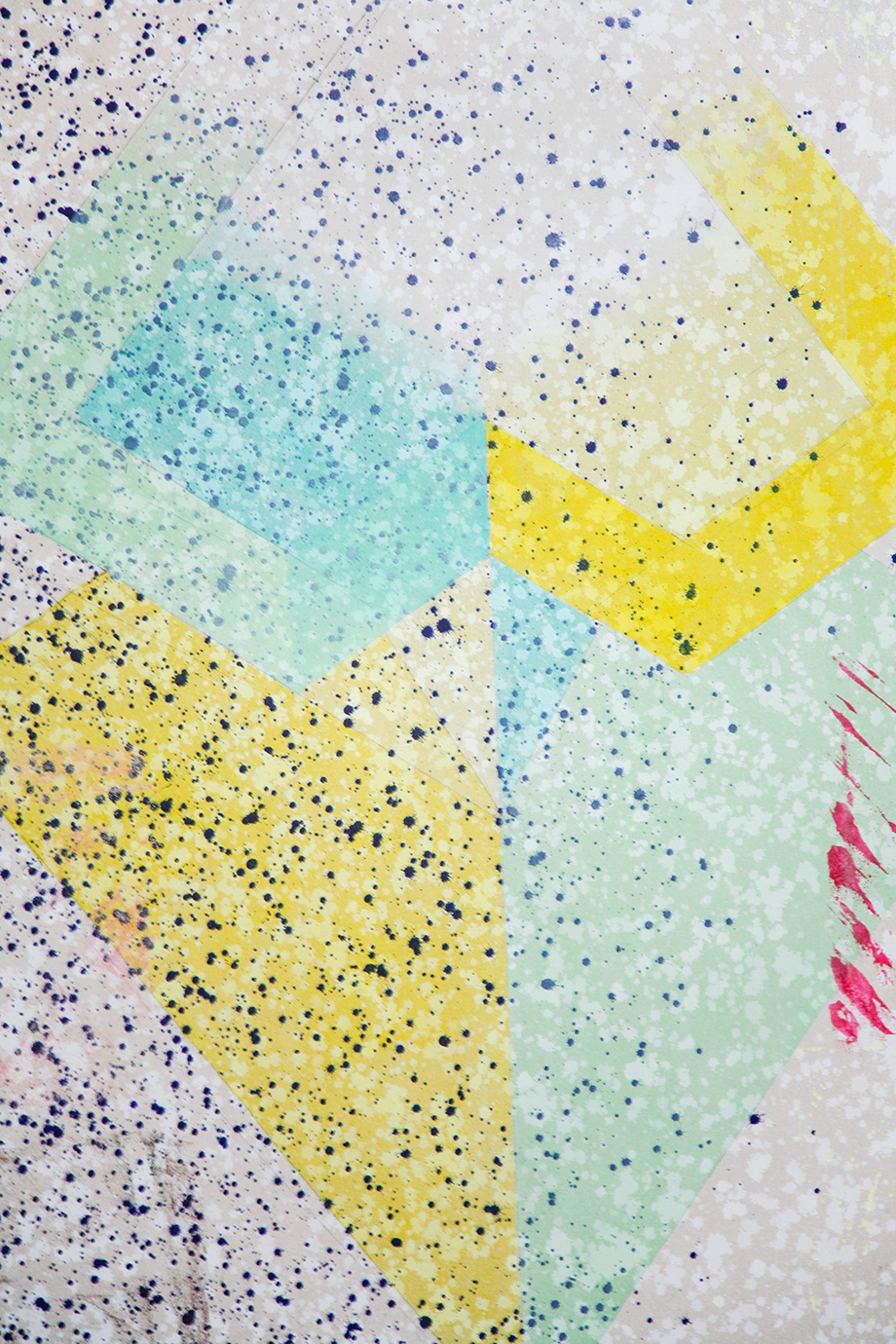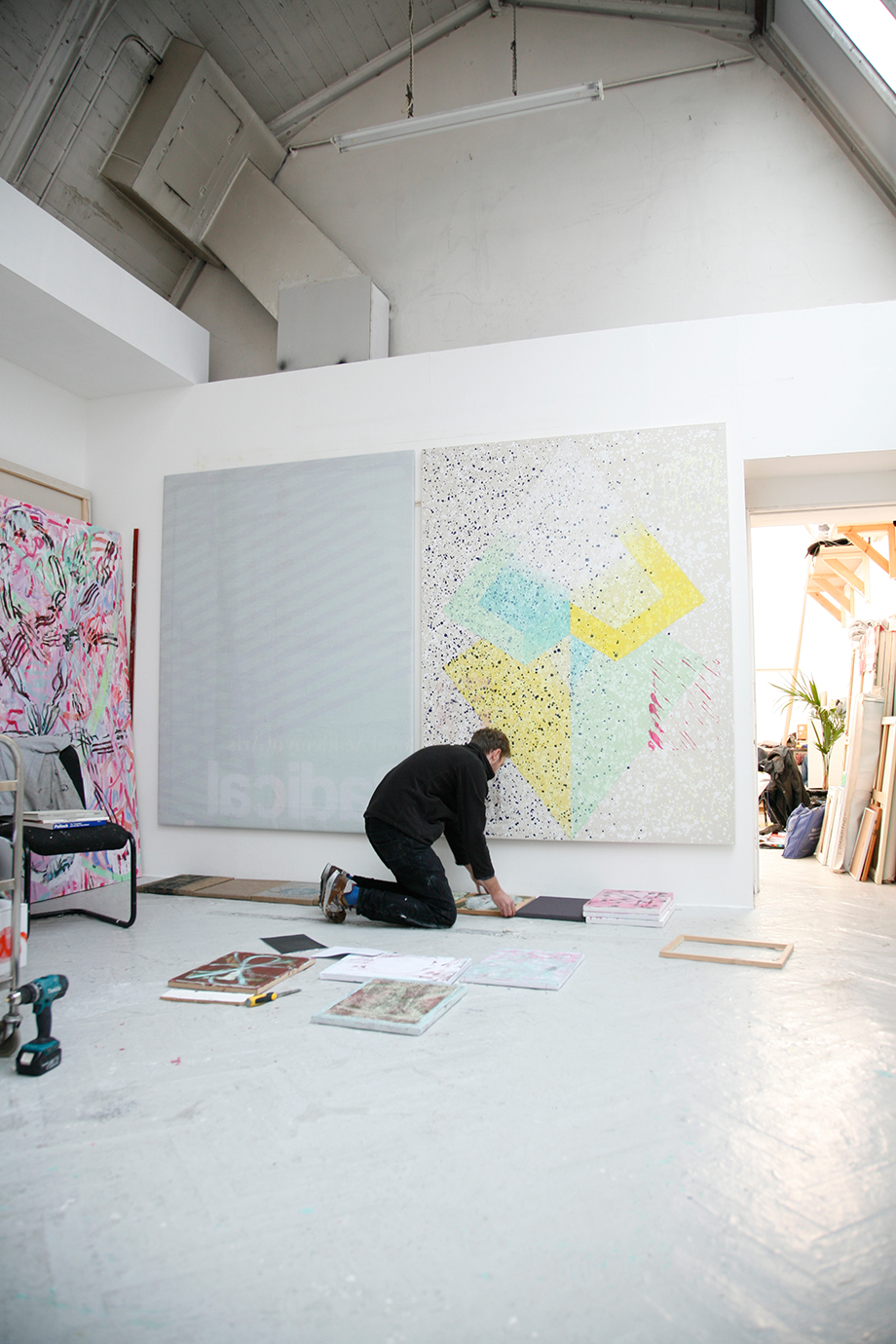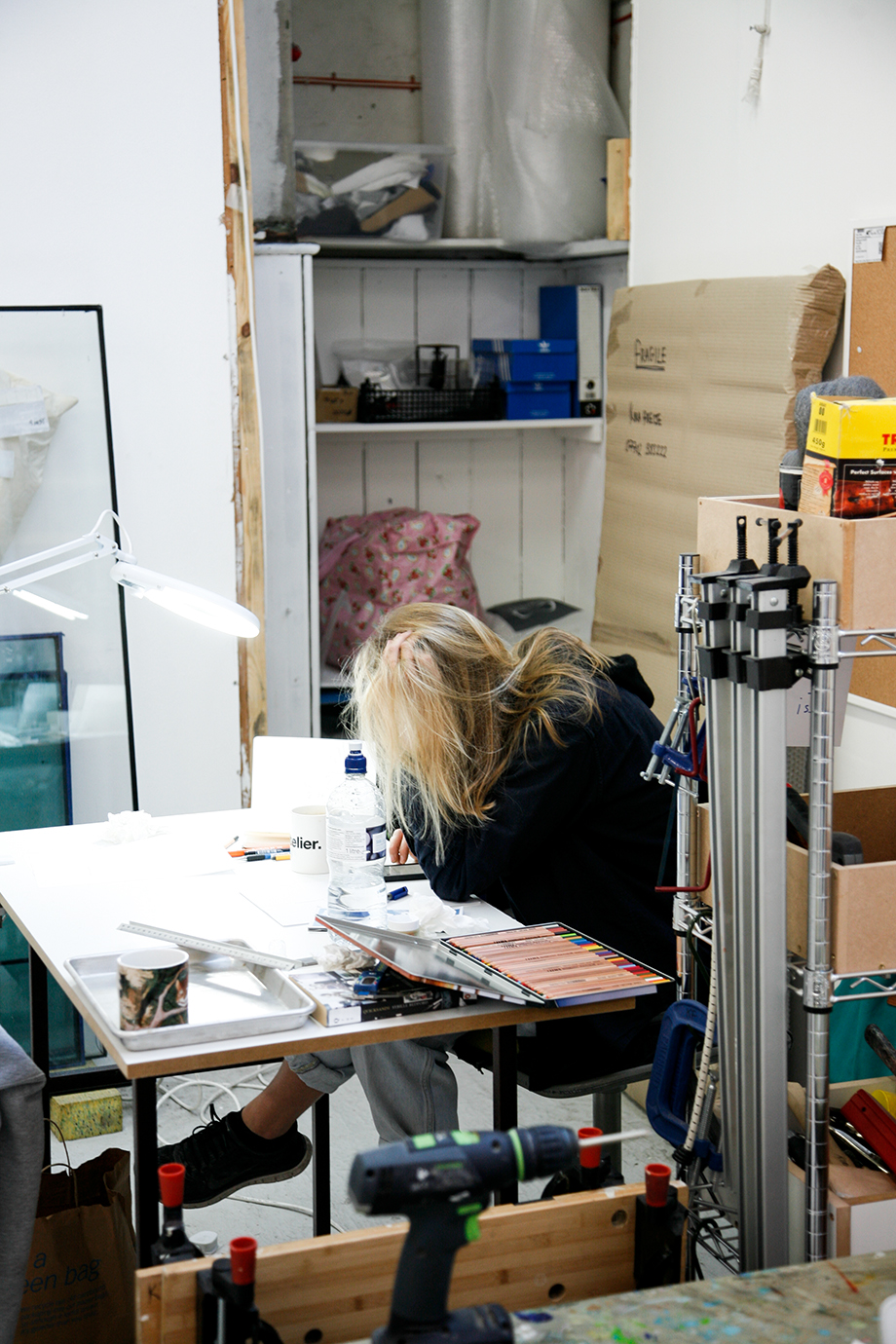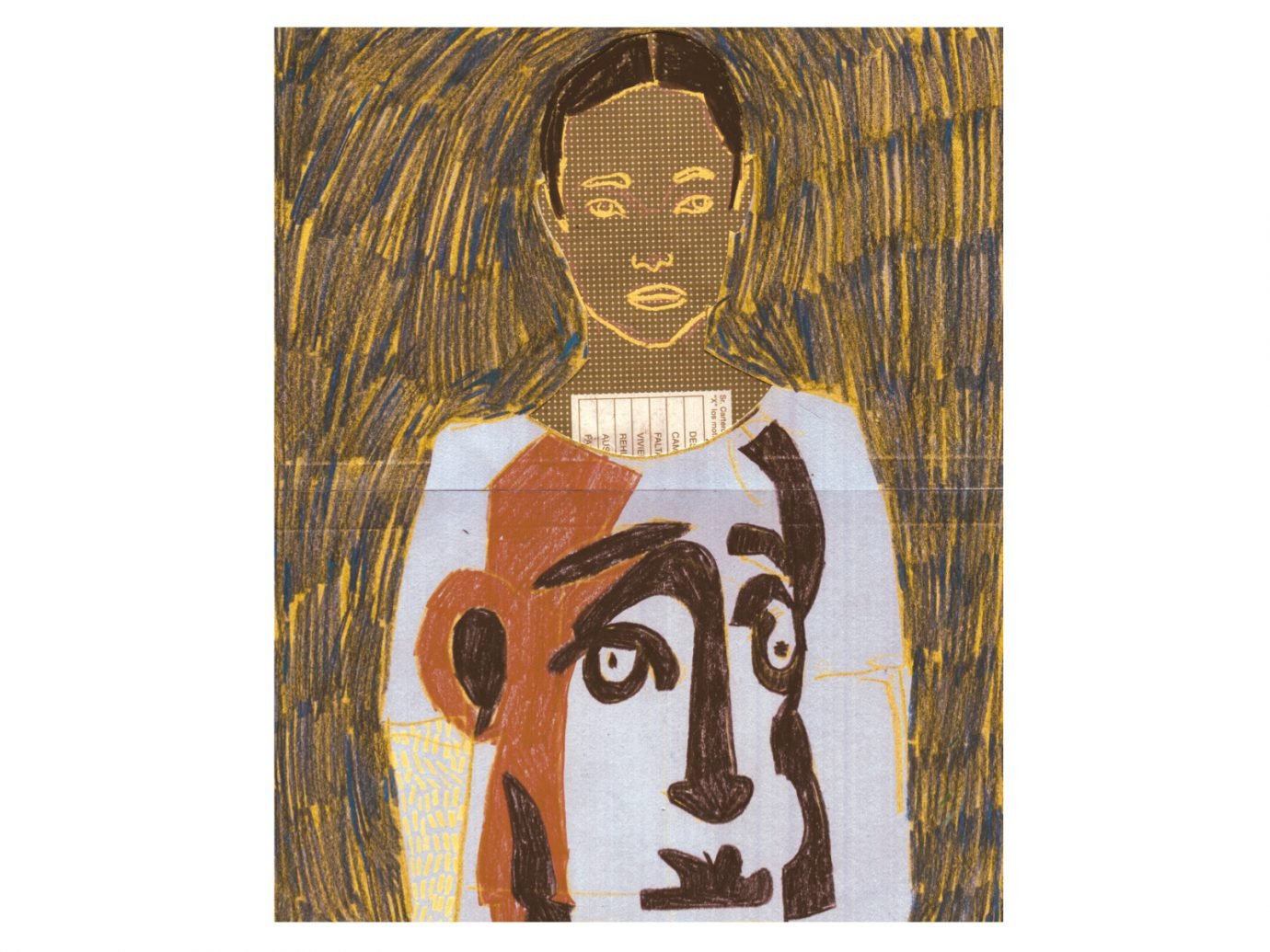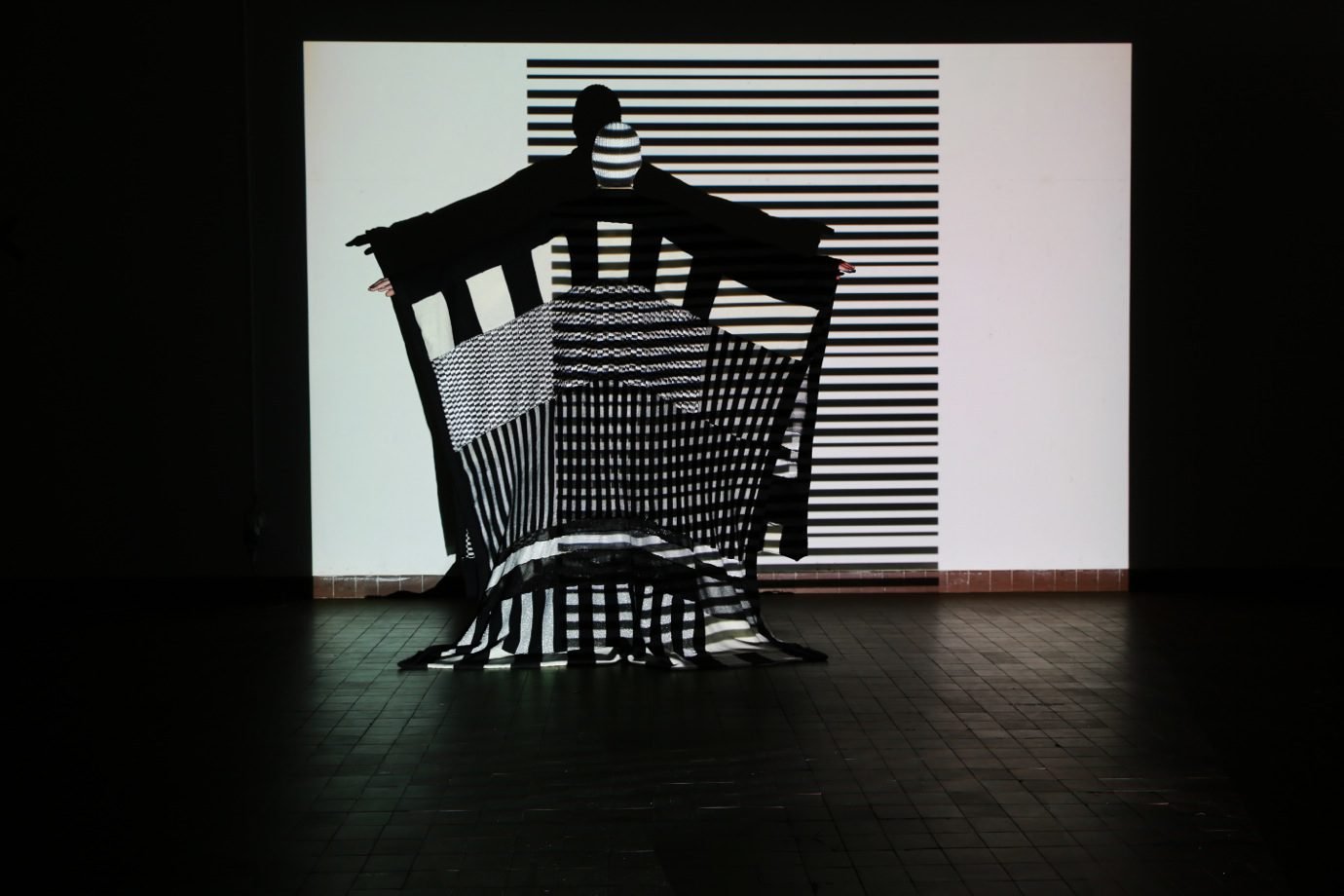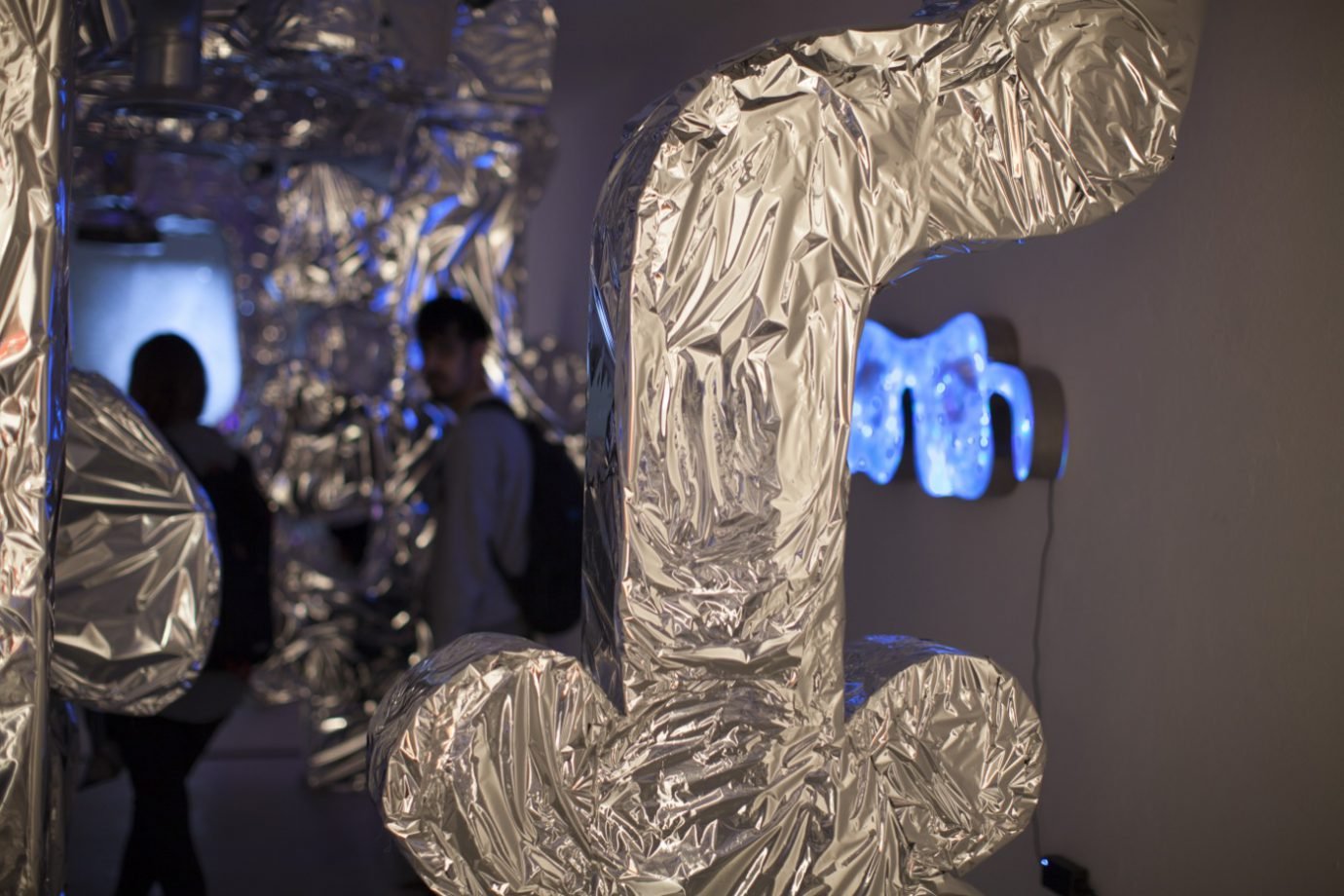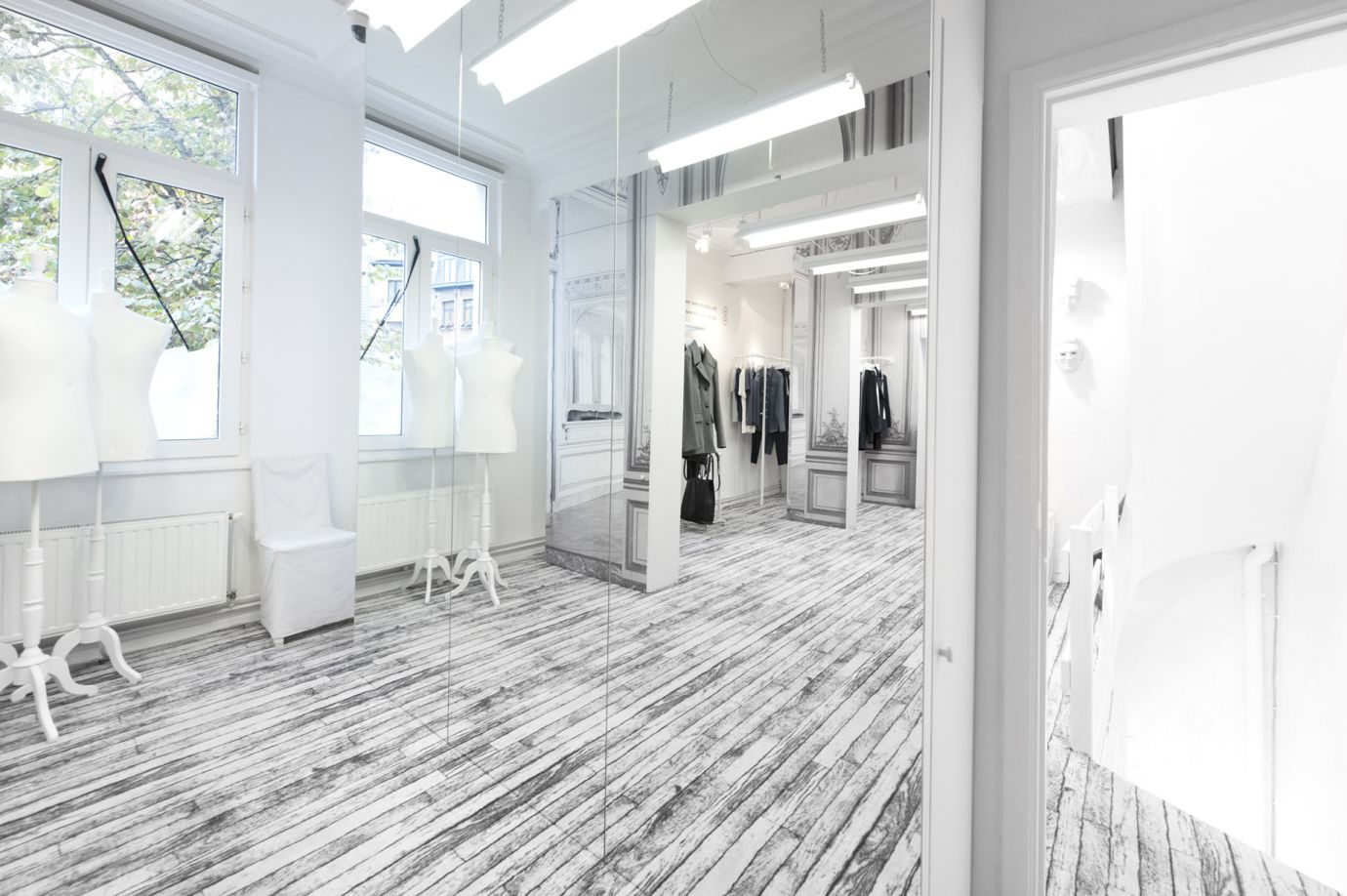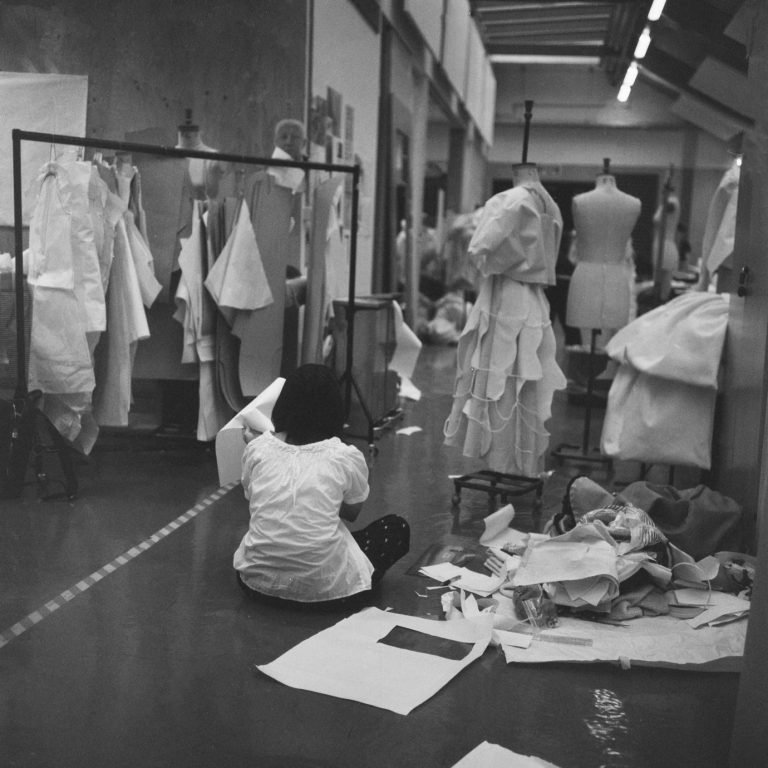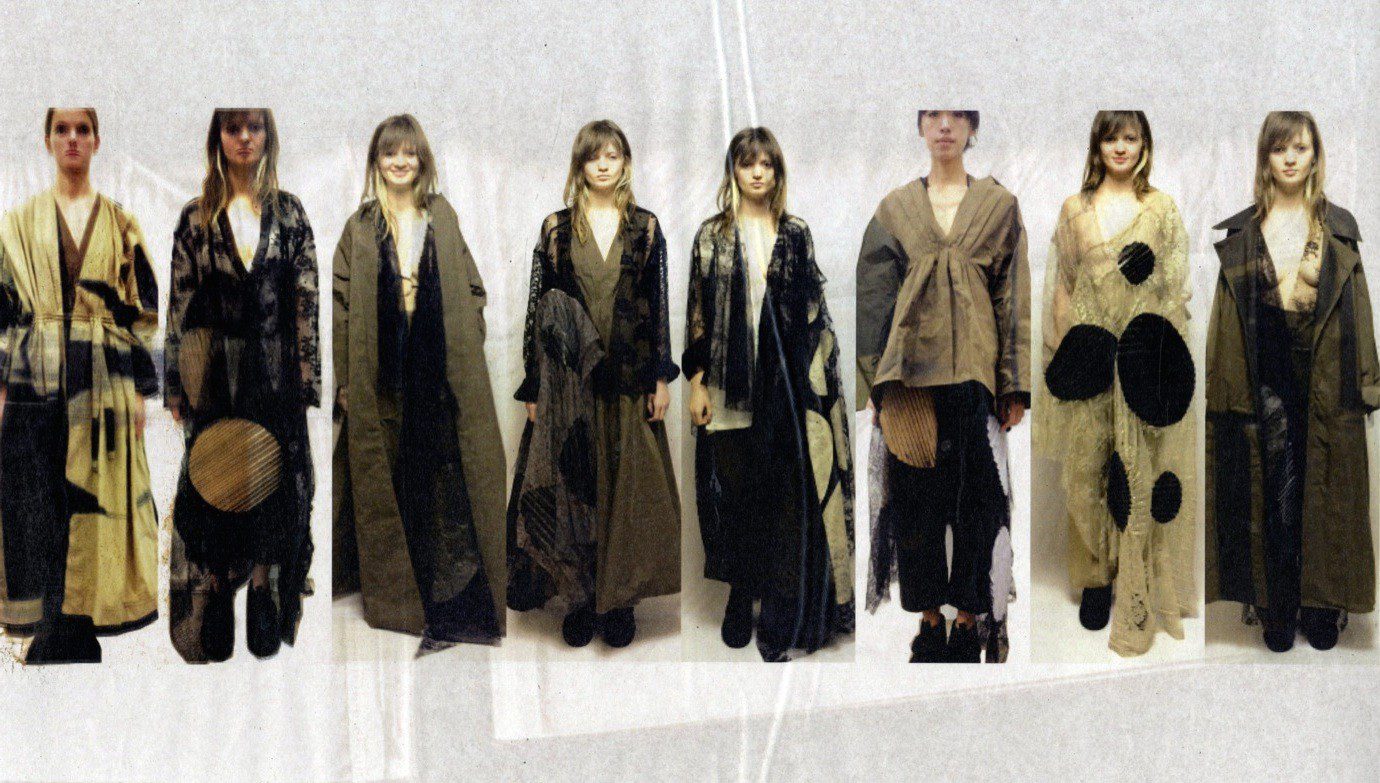Lewis Hammond’s studio
Ushered into the hallowed halls of the RA Schools, we arrive minutes after a large group of prospective candidates leave the building following an open day. Inside, the studio walls and floors are plastered with the work of current students: tentative early paintings, unfinished sculptures, pages of inspiration and ideas, fresh canvases stretched with anticipation for the year ahead.
We are here to talk to Eliza Bonham Carter, Head of the RA Schools, about what makes the course here so unique, and, at a time when arts education is fragile and expensive, what makes it so necessary. As the cost of education has recently risen threefold, the opportunity to study contemporary art free of the burden of student debt is sought after by many students, especially given the spiralling costs of life in London.
THE ROYAL ACADEMY SCHOOLS IS DIFFERENT FROM OTHER ART SCHOOLS, BECAUSE YOU STUDY THERE FOR THREE YEARS AND YOU DON’T PAY TUITION FEES. – JULIE BORN SCHWARTZ
We asked Eliza the obvious question, how is this self-financing system possible? “We can do it because back in 1768 this group of artists came up with the most incredible business plan. I mean my god, they would have won “The Apprentice”, it is just so clever. They would have an art school that was free and that was paid for by an annual exhibition, which is the Summer Exhibition.” But can a single show cover the cost of running an entire art school? “No, it’s more complicated than that now. We raise currently about four fifths of our income through fundraising activities, and the Academy always underwrites what we don’t raise. That is where the Summer Exhibition still plays a vital role.”
The rise of institutions such as Open School East attest to the current need for alternative art schools models. Across the country, and indeed the world, academics are exploring new ways of teaching in the face of increasingly restrictive curriculums. Independence from the state seems to be the only option if one wants to put forward a free education. The self-financing has a triple impact on the RA Schools: it enable students who can’t or won’t consider a 9000 pound a year education to consider the Schools; it means you can allocate more of your time to education than to work – as Eliza remarks, “It means that students can be working here more instead of earning money, and this is very good for the work”; and it also permits the Schools to dictate their own curriculum.


